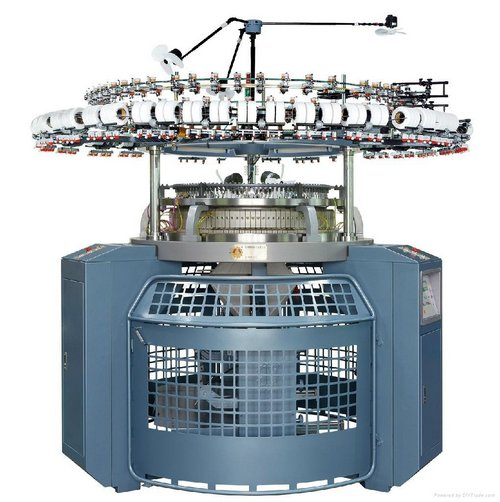Woven and knitted Denim:-
Woven and Knitted Denim Manufacturing and Limitation of Woven Denim:
Denim Defination:
Denim is a sturdy cotton warp faced textile in which the weft passes under two or more warp threads. This twill weaving produces a diagonal ribbing that distinguishes it from Cotton duck.
The most common denim is indigo denim in which threads are dyed while the weft thread is left white. As are the result of the warp faced twill weaving one side of the textile is dominated by the blue warp threads and other side is dominated by the White weft threads. This causes blue jeans to be white on the inside. The indigo dyeing process, in which the core of warp threads remains white, creates denims signature fading characteristics.
Denim Manufacturing using conventional weaving:
The weaving process interlace the warp are lengthwise indigo dyed yarn and the filling, which are the natural colored cross wise yarn. The warp threads are in the form of sheet. The weft thread is inserted between two layers of warp sheets by means of a suitable carrier, such as shuttle, projectile, rapier, air current, water current etc. The selection of carrier depends upon the type of weaving machinery used. The two different technologies available for weaving machines are conventional shuttle weaving system which is done by ordinary looms or automatic looms and shuttle less looms such as air jet, water jet, rapier loom, projectile weaving machines. The conventional shuttle looms results in lesser production due to slow speed and excessive wear and tear of machinery. As such now denim is generally woven through shuttle less weaving system.
Limitations of woven Denim fabrics:
1) Fiber count-
Knits denim are made of one continues thread. Woven fabrics are made of two sets of individual strands so we required additional preparatory process like warping, sizing, drawing in.
2) Stretch- Knit fabrics stretch because of the loops in the fibers. Woven fabrics do not stretch because their fibers run at 45 ‘ angles to one another.
3) Bias- Woven fabric have a visible bias on each piece matches when sewn. Knits do not generally have a nap.
Knitted Denim manufacturing:
Denim effect on knitted fabric could be made from thee types of technologies. They are float plated technology, Thread fierce, Interlock plated Jacquard.
The structure using knit and float stitch, using knit cams as well as sinkers to do knit on one side of fabric and a very tight float on the other where the float gives the woven effect. Depending on the cylinder cam arrangement, the machine generates the ability to do one, two, three needle floats.
Knit denim and tuck denim were produced in a single jersey circular knitting machine with lycra attachment. The fabric produced has been passed through a stenter and compactor in order to heat set the fabric as well as the lycra.
Machine Specification.
Machine, type-Single jersy circular knitting machine.
Cylinder diameter- 32 inches
Needle gauge- 24 G
Number of feeder- 96
Number of needle- 2412
Rotation -Anticlockwise.
Machine Used for knit Denim;
1)Single jersey circular knitting machine
2) Sample yarn dyeing machine
3) Winding machine
4) Inspection machine
5)Hydro extractor (for yarn dyeing)
6) Dryer (for yarn dyeing)
7) Stenter (for finishing)
8) Compactor (for fabric)
Material required for Denim knitting:
1)Yarn- 100% combed cotton yarn, ring spun yarn
2)Yarn count- 24 Be
3) CSP-242
Woven and Knitted Denim fabric Property:
1) Knitted denim fabric show greater spirality compared to woven denim.
2) Good washing fastness for knitted fabric because of use of reactive dye makes covalent bond with t he fibre rather than forming a coating like that of indigo dye in denim fabric therefore the woven denim fabric dyed with indigo dye shows moderate washing fastness compared to the knitted denim.
3) GSM of knitted denim fabric is higher as compared to woven denim. GSM of denim woven fabric is low because after washing some size ingredients in the sizing removed during sizing.
Conclusion
In above study it is clear that knitted denim gives a good performance compared to woven denim with low manufacturing cost.
Ref :-https://textilelearner.net







Comments
Post a Comment